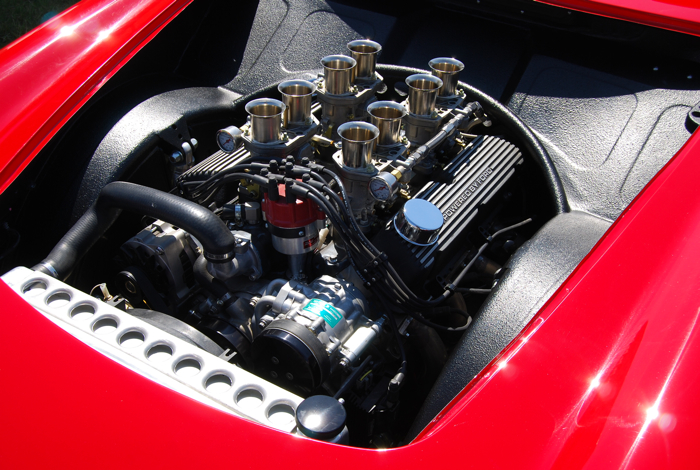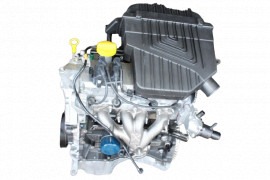Exploring the Inner Workings of a Compact Automobile's Engine System
As motorists, we often take for given the intricate processes that occur within the boundaries of our vehicle's engine system. In this expedition of a portable automobile's engine system, we will unravel the internal operations of this mechanical harmony, dropping light on the mysteries that drive us onward on our everyday journeys.
Combustion Process Summary
The burning procedure in a small automobile's engine system is an essential system that successfully converts gas right into power to power the lorry. This procedure takes place within the burning chamber of the engine, where fuel and air mix, stir up, and produce regulated explosions. The combustion procedure contains 4 major phases: intake, compression, power, and exhaust.
Throughout the intake phase, the piston moves downward, pulling in a mixture of air and gas into the burning chamber. The following phase, compression, entails the piston relocating upwards, compressing the air-fuel mixture to enhance its strength. Ultimately, in the power phase, the spark plug fires up the compressed mix, resulting in a fast expansion of gases that compels the piston back down. This down motion produces the power required to drive the lorry. In the exhaust stage, the scorched gases are removed from the burning chamber via the exhaust shutoff, preparing the chamber for the following cycle. This cyclic burning process is fundamental to the procedure of a compact lorry's engine system, making sure effective power conversion for propulsion.
Piston and Cyndrical Tube Communication

The piston's precise fit within the cylinder is essential for maintaining optimum compression and avoiding power loss during combustion. Limited clearances in between the piston and cylinder walls guarantee effective securing, permitting the piston to relocate smoothly without enabling gases to leak past. Appropriate lubrication is likewise important to minimize friction and wear between these parts, improving longevity and efficiency.
Furthermore, the design and products made use of in producing the piston and cylinder impact engine effectiveness and longevity. Modern engines frequently employ lightweight yet long lasting products like light weight aluminum alloys for pistons and cyndrical tube liners to minimize inertia and improve thermal efficiency. On the whole, the unified communication in between the piston and cyndrical tube is essential to the engine's performance and overall performance.
Gas Injection System Functionality
Fuel injection systems in portable lorry engines play an essential role in precisely delivering fuel to the combustion chamber for regulated and effective ignition. The gas injection system operates by injecting fuel into the combustion chamber at the optimal moment during the engine's procedure (opel corsa engine). This specific timing ensures that the fuel blends equally with the air for correct combustion, resulting in enhanced fuel effectiveness and decreased discharges
There are mainly two kinds of gas injection systems used in compact automobile engines: port fuel injection (PFI) and straight gas shot (DFI) PFI systems inject fuel into the intake port before the consumption shutoff, while DFI systems infuse gas directly into click to read the burning chamber. Both systems have their benefits, with DFI offering far better fuel atomization and PFI supplying a more cost-effective service.
Comprehending Engine Cooling Mechanisms
Effective procedure of a small lorry's engine depends heavily on the effectiveness of its cooling mechanisms. The air conditioning system in a portable vehicle normally is composed of several components working together to regulate the engine temperature. Understanding these engine cooling devices is crucial for preserving the performance and longevity of a compact lorry's engine system.

Exhaust System Elements Explained
The optimum performance of a small automobile's engine cooling devices depends on a corresponding system recognized as the exhaust system, which consists of various important elements for making sure efficient exhausts and engine efficiency. The exhaust manifold collects exhaust gases from the engine's routes and cyndrical tubes over here them to the catalytic converter.
One essential part of the exhaust system is the oxygen sensor, which monitors the oxygen degrees in the exhaust gases to help manage fuel intake and guarantee optimum engine performance. opel corsa engine. In addition, the resonator might exist in some exhaust systems to decrease sound levels. Generally, the exhaust system plays an important duty in maintaining engine performance, reducing dangerous emissions, and making sure a quieter driving experience for portable lorry proprietors

Conclusion
In final thought, the small automobile's engine system is a complicated mix of elements that work with each other to help with the burning process, transform gas right into power, and remove waste gases. Recognizing the internal workings of the engine system, including the published here piston and cylinder interaction, gas shot system, engine air conditioning devices, and exhaust system elements, is vital for maintaining ideal efficiency and performance of the car.
The burning process in a small lorry's engine system is a critical mechanism that successfully transforms gas right into power to power the vehicle.Fuel injection systems in compact automobile engines play a crucial role in precisely delivering gas to the burning chamber for reliable and controlled ignition.There are largely 2 kinds of gas injection systems made use of in portable vehicle engines: port fuel shot (PFI) and straight gas shot (DFI) Understanding these engine cooling mechanisms is important for maintaining the performance and longevity of a compact car's engine system.
The ideal performance of a portable lorry's engine air conditioning systems depends on a corresponding system understood as the exhaust system, which comprises various vital elements for making sure reliable exhausts and engine efficiency.